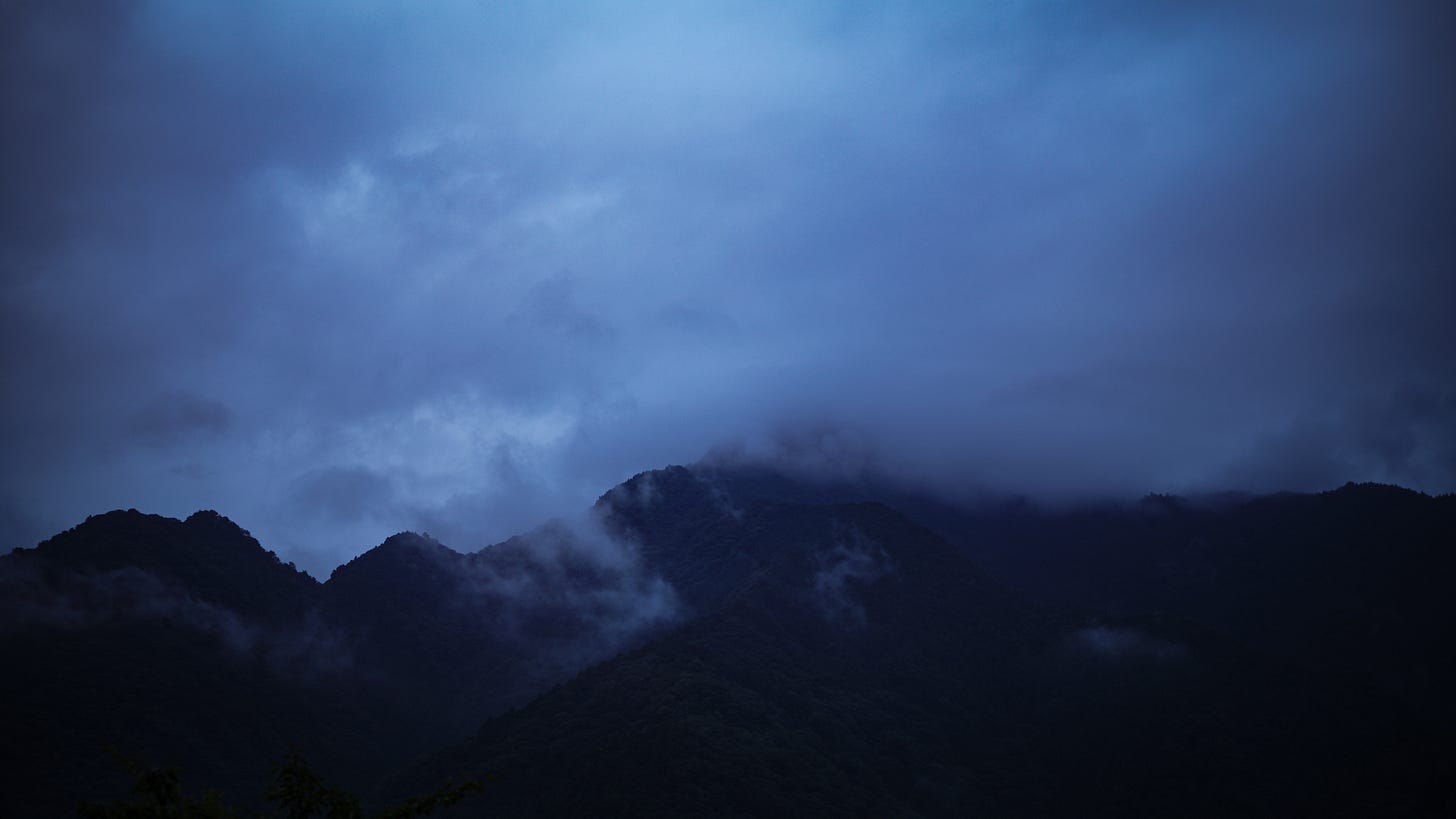Today I traveled from Takamatsu to Mt. Tsurugi, then back to Takamatsu, and finally to Tokushima. Once again, I felt strongly that the differences in folk character become strikingly apparent simply by crossing a single mountain, and I believe Shikoku is the place where one can most vividly sense this fact. Because regions like Shikoku, separated from Honshu by the sea throughout long history, have been isolated, these tendencies are especially pronounced. Even today, when three great bridges—linking Hyogo to Tokushima, Okayama to Kagawa, and Hiroshima to Ehime—have made it possible to drive freely between Honshu and Shikoku, the folk character that had been historically closed off cannot be erased in just thirty or forty years.
In Takamatsu, Kagawa, where people are blessed by the gentle climate of the Seto Inland Sea, residents appear cheerful and lively, and the city still has its share of gatherings of people. However, crossing just one mountain into Tokushima, I sense an atmosphere tinged with an indescribable air of gloom, and I find it difficult to adjust to it.
At the end of May I also visited the Tokushima area and entered the sacred Mt. Tsurugi. On that occasion I took the western route from Sadamitsu and investigated the traces of ancient clans, but this time I entered from the eastern side via Mima and conducted my research there. Mima City itself is a relatively new municipality, created through a series of mergers, but originally the mountain settlements of Mt. Tsurugi were not part of the Mima basin communities, which is why the character of the mountain people remains strikingly different from those of the village below. The settlement I visited this time was at an altitude of around 500 meters, but to be honest, what remains of it today is in near collapse.



